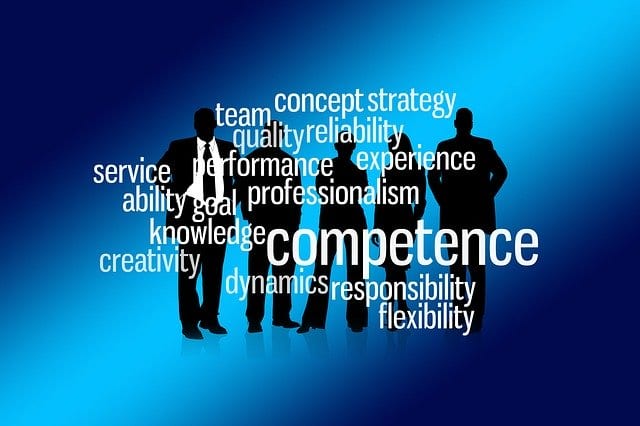Leadership Coaching Models
With the diversity of professional coaches, coaching approaches, and coaching models available, it is a confusing marketplace for those who are unsure about what they need. This is a guide to seven of the better-known leadership coaching models. It may answer some of your coaching questions.

1. The GROW Model
Probably the most popular leadership coaching model. It is an acronym for Goal , Reality, Options and Wrap-Up to mark milestones in the coaching conversation.
Features of the GROW Model
- The coach builds rapport and connection, to quickly gain insight into a TOPIC that is relevant to the client.
- The client identifies a GOAL to work on.
- The coach brings REALITY and clarification to the issue using open-ended questions.
- The coach helps the client to generate OPTIONS.
- The coaching session WRAP-UP involves the client identifying their reasons for selection of that option.
- The session concludes with an ACTION Plan for the client to follow.
Context for the GROW Model
- It is an accessible and comprehensible leadership coaching model.
- The coach does not require training in psychology or psychotherapy.
- GROW plays to the organisational view and is very suited to workplace coaching and functional performance issues.
- Works well for problems that can be easily formulated.
2. Solution Focused coaching
The coach focuses the client’s attention towards building a strong emotional connection with a solution.
Features of Solution Focused Coaching
- The coach helps the client to reframe their problem as being solvable.
- The coach facilitates self-directed learning and self-regulation in the client through goal setting, monitoring, and evaluating.
- The coaching conversation focuses on doing more of what is working.
Contact Geoff to discuss further.

Context for Solution Focused Coaching
- It is an effective coaching model when the coach is capable of working at the emotional level to generate motivation.
- The coach must have a good understanding of human change and the client’s specific context to generate action plans that inspire the client.
- The model assumes that the client is discontent with the present, has a vision of the future and has the skills to change.
3. Cognitive Behavioural Coaching
This approach to executive coaching is built on the belief that people are disturbed, not by things, but the views that people take of things. In other words, that our perception determines our reality.
Features of Cognitive Behaviour Coaching
Development professions can follow an ABCDE model as follows:
- First step is to understand the client’s objective description of the situation & their subjective description (their viewpoint) of the situation which activates (A) the disturbance.
- The coach helps the client to surface their self-limiting beliefs (B) that trigger their viewpoint.
- What are the consequences (C) of the disturbance (anxiety etc)?
- Dispute (D) the Self-limiting belief: is it useful to the client and if so, what are the under lying assumptions that make it useful?
- The coach works with the client to build an alternative and effective (E) outlook and to agree an action plan that delivers different results.

Context for Cognitive Behaviour Coaching
- This coaching model works best for clients who are psychologically minded and naturally reflective.
- The executive coach must have the skills and experience to implement the model.
4. Neuro Linguistic Programming (NLP)
NLP focuses on the study and replication of excellence using the building blocks of subjective experience.
Features of NLP
- The coach listens to identify the logic level of the client and then to identify the optimum level of intervention (levels include environmental, behavioural, capability/skills, beliefs/values, identity or higher purpose).
- The coach challenges ignored information, generalisations and distortions and works on changing the client’s language to change their experience.
- NLP coaches seek to move the client from focusing on issue avoidance to identifying what they want to move towards.
Context for NLP
- NLP is useful when the client is unclear about what they want to achieve. The NLP coach assumes ambivalence as a positive force and not as evidence of a lack of motivation.
- NLP coaches must be flexible, capable of flipping between macro and micro levels and comfortable with ambiguity.
5. Transpersonal Coaching
The transpersonal perspective is a systemic approach that works with the interconnectedness of everything. This coaching model seeks to connect with a client’s spiritual intelligence and sense of deeper purpose.
Features of Transpersonal Coaching
- It involves moving the client beyond an understanding of their current reality to encompass broader contexts such as organisational, marketplace, social and planetary.
- The coach will seek to enable the client to unearth ‘clashing tendencies’ or sub-personalities where different parts of the client want different things.
- In working with the client to dis-identify with their sub-personalities, they will have more choice about moving forward.
Context for Transpersonal Coaching
- Appropriate in a coaching conversation where the client needs to move beyond ‘how to do it’ coaching (GROW) to understanding the obstacles in their own mind that are preventing them from doing it in the first place.
- Typically, the client is working through a ‘crucible’ experience and is seeking to connect with the emergent purpose in whatever difficulty they face.
6. Appreciative Coaching
This coaching tool shifts attention from what is wrong and needs to be fixed, to what is right and positive. It assumes that simply inquiring about an issue produces change and that we produce more of what we inquire about.
Features of Appreciative Coaching
Appreciative coaching is based on 5 principles:
- Anticipatory Principle: Nurture the client’s positive expectations about the future.
- Constructionist Principle: Assist the client to construct a positive view of the world and they will react with it accordingly.
- Simultaneity Principle: Inquiry in the present, changes the interpretation of the past and the future – so change and inquiry happen simultaneously.
- Poetic Principle: Past, present, and future are open to endless reinterpretation. We can always turn attention to what is good or desirable.
- Positive Principle: Provide genuine affirmation because when clients are in a positive mode they act more effectively and are more capable of moving towards a new future.
Context for Appreciative Coaching
- This coaching style is useful when problems are ‘wicked’ i.e., problems without a definitive structure.
- The coach has developed the art of asking questions that create a ‘joyful focus’.
7. Integrative Coaching
This model is designed for executive coaching. It takes the best from other evidence-based approaches and blends them together. It may not overtly seek to engage at the spiritual level as in transpersonal coaching – but a spiritual dimension is likely to be implicit.
Features on Integrative Coaching
The model encompasses the following areas:
- Bonding: Defining, building, and agreeing the coaching relationship and its boundaries. This may involve listening to the client as they speak at length.
- Behavioural: GROW linked to SMART goals.
- Cognitive: explore the cognitive patterns sitting behind behaviours using reframing and visualisation.
- Unconscious cognition: exploring long held patterns of behaviour to reveal unconscious thoughts and beliefs.
Context for Integrative Coaching
- Where behavioural change is desired by the client
- It is likely to emerge as the preferred leadership coaching approach when an experienced executive coach is working with senior leaders who have significant responsibility.
- Where an issue needs to be addressed in terms of behaviour AND thinking style AND self-awareness.
This exploration of various coaching models and philosophies may help you to appraise your own coaching needs and the profile of executive coach most relevant to your context.
Find out more about our executive coaching services.